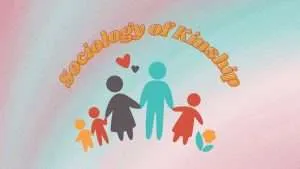It is one undertaking to study sociology and another to leverage that knowledge in a way that benefits others. My sociology internship with Bethany House gave me the opportunity to implement the skills I have learned and learn from those who have experience in supporting underserved communities and women experiencing homelessness.
What is Bethany House?
Bethany House is a nonprofit organization based in Long Island, New York that serves women and women with children caught in the crisis of homelessness. Established in 1978, Bethany House has continually worked to provide shelter in a safe, home-like setting. Working closely with the community, Bethany House not only offers a safe and secure environment for their guests to live but is committed to supporting the women in every step of their journey to permanent housing.
The mission statement on the Bethany House website reads, “Through our partnerships, we provide the women in our programs with trauma informed clinical services, in-house and community-based health services, and case management focused on securing educational and employment growth opportunities and a path to permanent housing and self-sufficiency.” Bethany House is dedicated to their service and staff and volunteers work tirelessly to make a difference in the community and in these women’s lives.
My Sociology Internship with Bethany House
I only knew the basics about Bethany House before I began my sociology internship there, however through my time there I was able to hear about its history and witness their ideals be enacted in every aspect of their work. My first connection to Bethany came through meeting with Executive Director, Douglas O’Dell and Board Member/Chairperson of the Bethany House Quality Improvement Committee, Ellen Furuya. During this meeting I got to know both Doug and Ellen, as well as introduce myself and what I could offer.
Together we determined where I could best be of service, and from that point forward I worked with Ellen on the Quality Improvement Committee. We discussed working with some data from guest exit-surveys and conducting our own qualitative research initiative. I was excited to put my research and analysis skills to work and contribute to the important work done by Bethany.
I began my work by reviewing the previously tabulated data from the guest exit-surveys. The exit-surveys provided us with data about guest satisfaction of all components of their stay with Bethany House and allowed for their comments and suggestions to be aggregated and assessed. Most of this data had already been organized and analyzed by Ellen, so I was able to look it over but there wasn’t much for me to contribute. This work did allow me to become familiarized with the workings of Bethany House and was more so a learning opportunity for me to see how that data was presented and leveraged for promotional materials.
After this, we worked on an updated survey that would be more conducive for future interpretation and disseminated it to Residential Directors. At the same time, I collected some more recent exit-surveys and entered those into a new spreadsheet. All of my work up to this point allowed me to become familiar with the work of the Quality Improvement Committee, meet Bethany Staff, and contribute to pre-existing projects. All of this would help to prepare me for the major initiative I worked on throughout my internship.
Utilizing the Power of Data
Through frequent meetings with, and guidance from, Ellen, we established how we would proceed with our next project. The project was prompted by a statistic from the intake interviews. Bethany guests, on average, experienced 3 bouts of homelessness wherein they would return to a shelter. We wanted to better understand what happened when women would leave a shelter that would cause them to return to homelessness.
We sought this information about the women’s journey through homelessness in order to see if there were any areas where Bethany House could improve its services or generally make a difference in this cycle. To that end, we decided to conduct semi-structured, qualitative interviews with five guests to listen to their journeys through homelessness and see if there were any commonalities in their stories. This would be a project that would require the assistance of both Residential Directors and guests, so I proceeded with full speed and outlined our objectives, methods, and conducted a literature review.
After completing preliminary work, Ellen and I met with Diane Krasnoff, the special projects director, to see if there are any specific areas she would like for us to probe. With everything in mind, I created a rough draft of the interview questions. The process of perfecting the questions was tedious, but worthwhile, as we wanted to get the most out of these interviews as possible, while still being sensitive to the guests.
I conducted a practice interview with Ellen and a staff member who was once a Bethany resident, through which we were all able to agree that the questions were appropriate, and we could move forward. I met with five current Bethany guests and conducted the interviews. They ran from approximately 40 minutes to an hour, and I was able to record the audio of each. Following this I transcribed each interview and prepared myself to interpret the findings.
The interviews provided us with a plethora of qualitative data and with our objectives in mind I began organizing the material. The findings would be presented using a PowerPoint, so that influenced the way I assessed the data. I created a visual tracking each participant’s individual journey through homelessness and extricated five major themes in the women’s stories. These themes are described as financial instability, loss of support or abuse as a path to homelessness, psychological turmoil and unexpected events, difficulties with DSS (Department of Social Services), and being a refugee.
While this was the main objective of the project, I also pulled some additional points of interest that revealed other aspects of the women’s journey through homelessness and some specific points about Bethany House. These other findings included: a theme of hope and determination, specific mentions and praise for Bethany House, suggestions, feedback on programming, and a theme about community involvement.
I presented these findings to Doug, Ellen, Diane, and Maryanne, interim chairperson of the Board of Directors. As all the findings may not be pertinent to this reflection, I plan to highlight some of the main findings and incorporate aspects of our discussions, as well as provide some theoretical context.
Women’s Experiences of Homelessness
While most of what the interviews provided me with was personal testimony about how the women came to experience homelessness, many of them citing seemingly personal factors, the interviews as a whole reveal that there are certain societal/structural factors that almost made homelessness inevitable. Many women spoke of the high cost of living and failures of social services, that despite having a job they were unable to support themselves and their families and despite proving need they were unable to get help before losing their housing.
This was reflected in the five major themes: financial instability, loss of support or abuse as a path to homelessness, psychological turmoil and unexpected events, difficulties with DSS, and being a refugee. Additionally, these themes don’t operate as stand-alone factors, more often than not there were intersections and connections between the themes present in the women’s stories. These factors align with and can be better understood through an ecological perspective of homelessness.
The Ecological Perspective of Homelessness
According to Paul Toro and colleagues’ 1991 paper, with the ecological perspective, homelessness is conceptualized as the result of “interactions among risk factors ranging from individual conditions to socio-economic structures and environmental circumstances.” This approach to understanding, alleviating, and preventing homelessness incorporates the social context in which individuals live and accounts for both structural and individual factors. The ecological perspective can account for the link between the financial theme and the difficulties with DSS theme found in the interviews.
In the interviews the women spoke of financial difficulties contributing to their homelessness and they would also speak about how DSS won’t give them enough to sustain themselves or DSS said they were making too much money, yet, still, they were unable to support themselves. With this perspective we can appreciate the complexity of the situation, as it may have been an individual factor that led to financial trouble, but it is a structural factor that inhibits the women from getting to a place of stability.
This is just one example of how this perspective can illuminate the many nuances of homelessness, which is important for amelioration. In a 2010 article on the ecology of homelessness, Roger Nooe and David Patterson write, “Efficacious responses to homelessness require an appreciation of the complexity of homelessness; its multiple, interacting causes; diverse manifestations; variable duration; and costly financial and social consequences.”
Community Involvement and Homelessness
Another finding from this project was concerning community involvement. Some of the questions that we asked were “Do you feel like you have a social support system?” and “Where do you find a sense of community” and the answers here were a little surprising. While guests were quick to agree that having a community and social support systems in place is important, they were more likely to say that they were independent or didn’t have a sense of community.
What is also interesting about this is that almost all of the women indicated later that part of their larger plan after leaving Bethany is to give back to the community. Ranging from starting their own non-profit, opening a health center/ working in the medical field, and being an asl interpreter.
This also aligns with Bethany House exit-interview data where women largely indicate “Yes” to the question ”Would you be able to help out occasionally at Bethany by volunteering to encourage, support and advise our new residents?” So it would seem that the women experience a sort of cognitive dissonance around their relationships with their communities, which could offer a glimpse into their mindset and perhaps indicate a sense of alienation or being let down by their personal social supports and communities.
Presenting the Findings to Bethany House
During the presentation we had many discussions on the implications of this research and collectively came up with some ways in which to address some of the findings. Not only was the presentation of these findings important for the work Bethany House is doing, but it gave me the opportunity to be involved in these discussions and offer my sociological perspective.
Overall, my time at Bethany House gave me the opportunity to apply my sociological knowledge and hone my skills. I learned a lot about the role of a quality improvement analyst within the context of a non-profit organization. I gained confidence in my research capabilities and was able to design and conduct my own qualitative research project. I am grateful to Bethany House and my supervisor, Ellen, for allowing me to contribute to such an inspiring organization and encouraging me to grow as a person and a student of sociology.








